In a world where culinary experiences are increasingly sought after, the contact grill has emerged as a key player in the kitchen appliance market. Offering a convenient and health-conscious way to cook, these appliances have captured the attention of consumers across Europe and America. As the demand for these versatile cooking tools grows, understanding the market dynamics, innovations, and the role of tailored suppliers becomes crucial for brands looking to thrive in this dynamic industry.
Introduction to Contact Grills in the European and American Markets
Contact grills have become a staple in the kitchen appliances market, particularly in Europe and the United States. These versatile cooking devices, known for their ability to cook food with even heat and minimal oil, have gained popularity among health-conscious consumers and culinary enthusiasts alike. In this section, we delve into the current state of contact grills in the European and American markets, exploring their evolution, consumer trends, and the factors that are shaping their future.
In Europe, contact grills have been embraced for their convenience and efficiency. The market has seen a steady growth over the years, with a particular surge in interest from countries like Germany, the UK, and France. Consumers in these regions are increasingly valuing quick and healthy cooking methods, making contact grills a perfect fit for their busy lifestyles. The European market is also characterized by a strong preference for high-quality, durable appliances, which has led to a demand for contact grills that offer superior performance and innovative features.
Similarly, in the United States, contact grills have found a solid niche among health nuts and time-poor families. The American market is known for its diverse culinary landscape, and contact grills have become a versatile tool for creating a variety of dishes, from breakfast sandwiches to gourmet burgers. The U.S. consumer is particularly interested in grills that provide a range of cooking options, such as flat-top cooking and sandwich pressing, to cater to different preferences and recipes.
The design and functionality of contact grills have evolved significantly over the years. Early models were often bulky and lacked the advanced features that today’s consumers expect. However, with advancements in technology, modern contact grills now come with features like adjustable heat settings, non-stick surfaces, and even digital displays that allow users to monitor and control the cooking process with precision.
In Europe, the market is segmented by product type, with flat-top grills being the most popular. These grills offer a large cooking surface, making them ideal for cooking multiple items at once. In the U.S., however, there is a growing interest in compact and portable contact grills, which are perfect for camping, tailgating, and small kitchens.
The rise of health consciousness has also played a significant role in the growth of the contact grill market. With the increasing awareness of the health benefits of grilling over frying, consumers are turning to contact grills as a healthier alternative. The appliances’ ability to cook with less oil or even without it has made them a favorite among those looking to reduce their fat intake.
In both Europe and the U.S., the contact grill market is influenced by several key factors. The first is the availability of high-quality ingredients, which allows consumers to prepare a wide range of dishes on their grills. The second is the convenience factor; contact grills are easy to use and clean, which is a major selling point for busy individuals. Lastly, the rise of social media and influencer marketing has played a crucial role in promoting contact grills, with many consumers seeking inspiration and tips from online platforms.
When it comes to market leaders, several brands have established themselves as go-to suppliers of contact grills. In Europe, brands like Tefal and Gaggenau are renowned for their high-quality appliances, while in the U.S., brands like George Foreman and Hamilton Beach have become synonymous with the category. These companies have not only innovated in terms of design and technology but have also focused on marketing strategies that resonate with their target audiences.
Looking ahead, the contact grill market is expected to continue growing, driven by technological advancements and changing consumer preferences. Innovations such as touchless controls, smart connectivity, and sustainable materials are likely to become more prevalent. Additionally, as the health and wellness trend persists, contact grills will continue to be a popular choice for consumers seeking a healthier way to cook their favorite meals.
In conclusion, the European and American markets for contact grills are dynamic and evolving, with a strong focus on quality, innovation, and convenience. As the market continues to grow, it will be interesting to see how contact grill manufacturers adapt to meet the needs of an increasingly health-conscious consumer base.
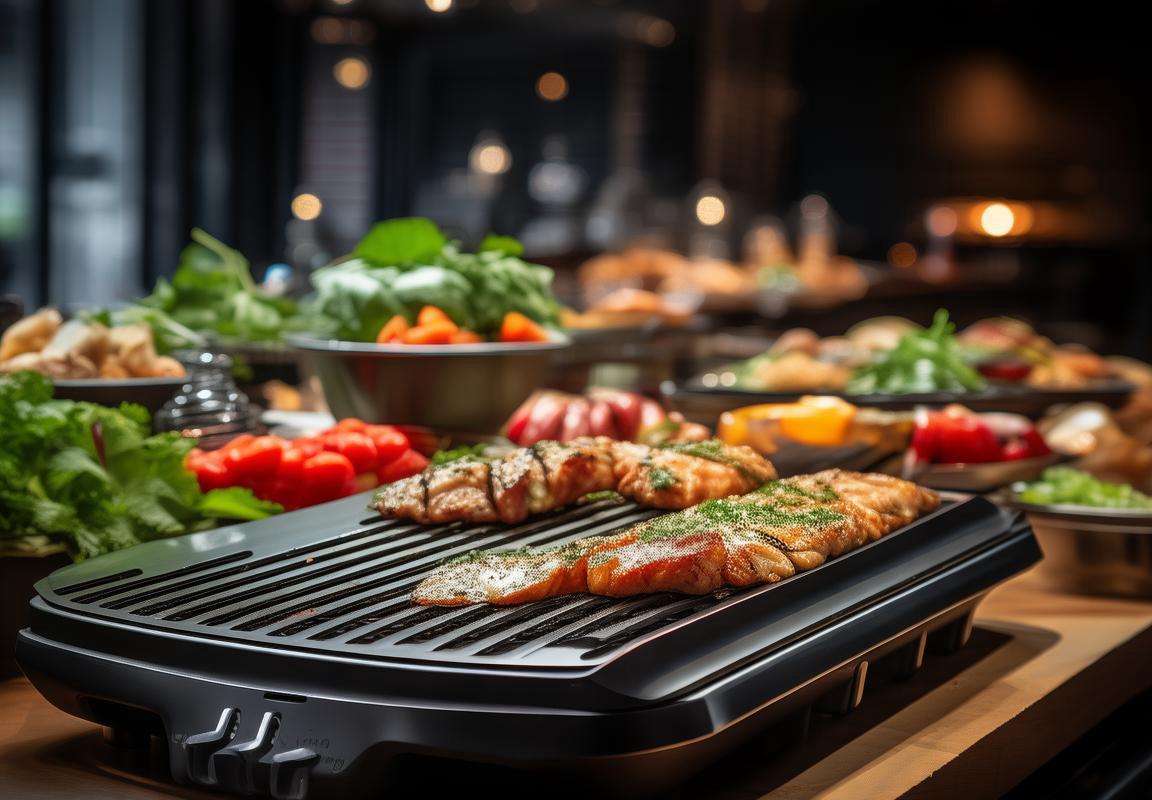
Market Overview: Growth Trends and Consumer Preferences
The European and American markets for contact grills have seen a remarkable evolution over the years, reflecting shifting consumer preferences and technological advancements. This dynamic landscape is marked by a surge in demand for convenience, health, and efficiency in cooking.
In Europe, the contact grill market has been on a steady incline, driven by the growing health consciousness among consumers. The region’s preference for outdoor cooking and the popularity of barbecues have naturally led to an increased interest in indoor cooking solutions like contact grills. The rise of health-focused diets, such as Mediterranean and low-carb regimes, has also contributed to the popularity of contact grills, which offer quick, even cooking without the need for added fats.
In the United States, the market for contact grills has experienced a similar upward trend. The convenience factor is a significant driver, as busy lifestyles have led consumers to seek out cooking appliances that save time and effort. Additionally, the health trend has played a crucial role, with consumers gravitating towards grills that allow for healthier cooking methods, like grilling instead of frying.
The market for contact grills in both regions is characterized by a few key growth trends:
-
Mini and Compact Models: There’s a growing demand for smaller, portable contact grills that cater to single-person households or those with limited kitchen space. These compact grills are often designed for travel or as a secondary cooking appliance.
-
Smart and Programmable Features: Consumers are increasingly interested in smart kitchen appliances that offer programmable settings for temperature, cooking time, and even recipes. This trend is driven by the desire for convenience and the ability to achieve consistent results with minimal effort.
-
Versatility: Contact grills that can cook a variety of foods, from meats to vegetables and even sandwiches, are gaining popularity. Brands that offer grills with interchangeable plates or multi-functional capabilities are tapping into this consumer preference.
-
Sustainability: The environmental movement has influenced the appliance market, with consumers seeking out energy-efficient models. Contact grills that are eco-friendly and have certifications for sustainability are becoming more sought after.
Consumer preferences in both Europe and America are also shaping the contact grill market:
-
Health and Nutrition: With a focus on healthy eating, consumers are looking for cooking methods that minimize the addition of fats and oils. Contact grills provide a healthier alternative to traditional frying or broiling.
-
Ease of Cleaning: The ease of cleaning is a significant factor in the purchase decision. Consumers prefer grills with non-stick surfaces and features that simplify the cleanup process.
-
Brand Reputation: Reputation and trust in a brand play a vital role in consumer choices. Established brands with a history of quality and innovation are often preferred over newer entrants.
-
Price Point: While price remains a consideration, consumers are increasingly willing to invest in a quality contact grill that offers value for money. The market is seeing a mix of budget-friendly models and premium options that cater to different budgets.
The contact grill market in both Europe and America is poised for continued growth, with a focus on innovation and meeting the evolving needs of consumers. As health and convenience remain top priorities, manufacturers will need to stay attuned to these trends to remain competitive.

Innovations in Contact Grill Technology
In recent years, the contact grill market has seen a surge in technological advancements, reshaping the way consumers cook and enjoy their meals. These innovations have not only enhanced the functionality and efficiency of contact grills but also catered to the evolving preferences of health-conscious consumers. Let’s delve into some of the key technological breakthroughs that have been making waves in the industry.
-
Non-Stick Coatings – The introduction of advanced non-stick coatings has been a game-changer for contact grills. These coatings ensure that food releases easily, reducing the need for excessive oil and minimizing the risk of sticking. Brands like George Foreman have leveraged this technology to offer grills that are both easy to clean and healthy to use.
-
Even Heat Distribution – Achieving an even heat distribution across the grill surface has always been a challenge. However, recent innovations have introduced materials and designs that promote more consistent cooking temperatures. Some models now come with multiple heat zones or precision temperature controls, allowing users to cook different types of food simultaneously without the worry of uneven cooking.
-
Smart Cooking Features – The integration of smart technology into contact grills has brought about a new era of convenience. Many modern grills now come with digital displays that allow users to set precise temperatures and cooking times. Some even have built-in timers, automatic shut-off features, and the ability to connect to smartphones for remote monitoring and control.
-
Variable Grilling Surfaces – Innovators in the contact grill market have developed grills with variable surfaces to cater to a wider range of cooking styles. For example, some models now offer a reversible grill plate, which can switch between a flat surface for traditional grilling and a ridged surface for searing. This versatility opens up a world of culinary possibilities for the at-home chef.
-
Energy Efficiency – As environmental concerns grow, so does the demand for energy-efficient appliances. Contact grills have responded by incorporating features that reduce energy consumption. This includes the use of induction heating, which provides a more rapid and efficient way to cook food, compared to traditional electric heating elements.
-
Healthier Cooking Options – With a growing awareness of the health benefits of grilling over frying, manufacturers have focused on creating healthier cooking options. Some contact grills now come with a “Healthy Grilling” setting that reduces the amount of fat that drips off the food, thereby reducing the amount of smoke and grease in the cooking process.
-
Customizable Grilling Plates – Some models offer customizable grilling plates, allowing users to choose from a variety of surfaces tailored to specific types of food. Whether it’s a ribbed plate for perfect grill marks or a flat plate for delicate foods, these options provide a level of personalization that was not previously available.
-
Sustainability Initiatives – Companies are also looking to reduce their environmental footprint by using sustainable materials in the construction of their contact grills. This includes the use of recycled materials, eco-friendly packaging, and energy-efficient manufacturing processes.
-
Interactive Cooking Guides – To help new users master the art of grilling, some contact grill brands have included interactive cooking guides within their digital interfaces. These guides provide step-by-step instructions, recipe ideas, and even suggest the best cooking times and temperatures for various foods.
-
Safety Enhancements – Safety has always been a priority in the appliance industry, and contact grills are no exception. New safety features include cool-to-the-touch handles, non-slip bases, and safety interlocks that prevent the grill from operating if it is not properly closed or if the lid is lifted during cooking.
These technological innovations in contact grill technology have not only made cooking more convenient and enjoyable but have also opened up new possibilities for health-conscious consumers seeking a more efficient and versatile way to prepare their meals. As the industry continues to evolve, we can expect to see even more sophisticated features that cater to the ever-changing demands of the market.
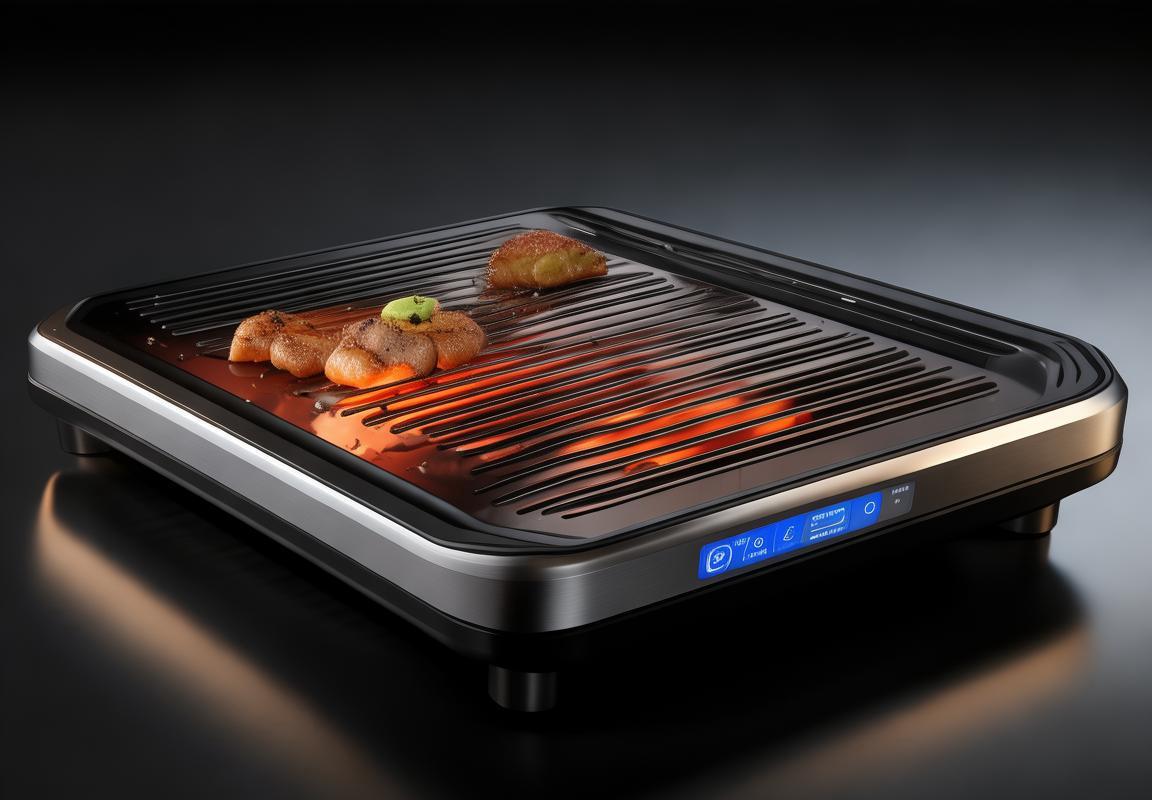
Key Players and Market Dynamics
In the competitive landscape of the European and American, several key players have emerged as leaders in the contact grill industry. These companies not only dominate the market but also drive the market dynamics through their innovative products, strategic partnerships, and marketing efforts.
One of the most prominent players is George Foreman, a brand that has become synonymous with contact grills. Known for its iconic design and efficient cooking capabilities, George Foreman has maintained its position as a market leader by continuously introducing new models and features that cater to consumer demands. Their commitment to health and wellness is evident in their range of lean grilling options, which have gained popularity among health-conscious consumers.
Another major player is Breville, an Australian brand that has made a significant impact in the American market. Breville’s contact grills are renowned for their sleek design and advanced technology, including adjustable heat settings and non-stick surfaces. The brand has expanded its presence through strategic partnerships with high-end retailers and has become a go-to choice for consumers looking for premium grilling solutions.
Cuisinart, a well-established name in kitchen appliances, has also made its mark in the contact grill sector. Their products are known for their durability and versatility, offering a range of features that appeal to both casual and professional chefs. Cuisinart’s marketing campaigns often highlight the ease of use and the ability to create restaurant-quality meals at home, which has resonated with a broad consumer base.
In Europe, brands like Tefal and Philips have been influential in shaping the contact grill market. Tefal’s range of contact grills includes models with advanced features like temperature control and variable cooking surfaces, catering to a diverse set of consumer preferences. Philips, on the other hand, has leveraged its reputation for innovation to introduce smart grills that can be controlled via smartphone apps, offering a seamless cooking experience.
Market dynamics are further influenced by the rise of e-commerce platforms, which have democratized access to contact grills and other kitchen appliances. Online retailers like Amazon and Wayfair have become significant channels for sales, allowing brands to reach a wider audience and capitalize on the convenience of online shopping. This shift has also led to increased competition, as more brands are now vying for consumer attention in this digital marketplace.
The influence of social media and influencer marketing cannot be overlooked in the current market dynamics. Influencers often showcase their favorite contact grill models, providing real-life reviews and demonstrations that can sway consumer purchasing decisions. This form of marketing has become a powerful tool for brands looking to build brand loyalty and drive sales.
In terms of distribution, many key players have established strong relationships with distributors and retailers. These partnerships are crucial for ensuring a wide availability of products across various channels, from large department stores to specialty kitchen appliance shops. The ability to be found in multiple locations has a significant impact on market share and brand recognition.
Moreover, the market dynamics are also shaped by regulatory changes and consumer safety concerns. Brands must comply with stringent safety standards and certifications, which can affect pricing and availability. As consumers become more aware of the importance of food safety and quality, these factors play a pivotal role in their purchasing decisions.
The contact grill market is also witnessing a trend towards sustainability and eco-friendly products. Consumers are increasingly interested in appliances that are energy-efficient and made from sustainable materials. Brands that can align with these values often gain a competitive edge and appeal to a growing segment of environmentally conscious consumers.
In conclusion, the key players in the contact grill market are driving market dynamics through a combination of innovative products, strategic partnerships, and effective marketing. The rise of e-commerce, the influence of social media, and the importance of safety and sustainability are all factors that continue to shape the competitive landscape and influence consumer preferences. As the market evolves, these key players will need to adapt and innovate to maintain their leadership positions.
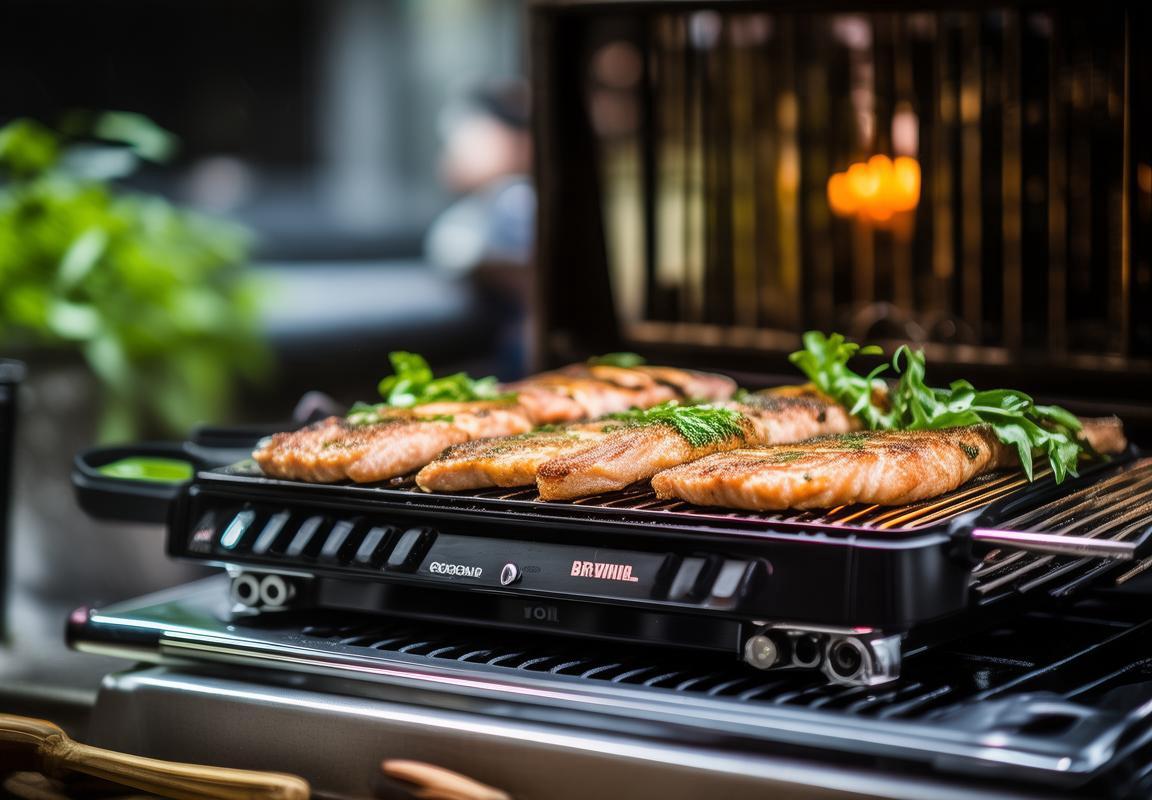
Understanding the Tailored Supplier Landscape
In the competitive world of kitchen appliances, the role of a tailored supplier is pivotal. These suppliers not only provide the products but also the flexibility and customization that modern businesses demand. Understanding the tailored supplier landscape involves recognizing the key characteristics that set them apart.
Tailored suppliers often specialize in specific niches within the kitchen appliance industry, such as contact grills. This specialization allows them to deeply understand the unique requirements of their clients, from design to functionality. They might focus on high-end models with advanced features or budget-friendly options catering to a broader market segment.
One key aspect of the tailored supplier landscape is the emphasis on quality control. These suppliers are committed to ensuring that every product meets stringent quality standards, which is crucial in the kitchen appliance sector where safety and performance are paramount. They invest in advanced manufacturing processes and employ skilled labor to maintain high-quality output.
Customization is another hallmark of tailored suppliers. They understand that one size does not fit all, especially in a market as diverse as the kitchen appliance industry. This means offering a range of options from materials used in construction to the specific features integrated into the contact grill. Whether it’s a matter of branding, color choices, or additional accessories, tailored suppliers are adept at accommodating these requests.
The tailored supplier landscape also reflects a strong focus on innovation. These suppliers are at the forefront of technological advancements, constantly seeking ways to improve their products. This could involve integrating smart technology into contact grills, enhancing their ease of use, or developing new materials that improve durability and energy efficiency.
Collaboration is a key element in the tailored supplier landscape. Suppliers often work closely with their clients to understand their business goals and how the contact grills can be integrated into their product lines. This collaborative approach ensures that the final product aligns perfectly with the brand identity and consumer expectations.
Supply chain management is another area where tailored suppliers excel. They are adept at managing inventory, ensuring that products are available when needed without overstocking. This efficiency is critical for businesses that rely on a steady supply of appliances to meet market demands.
Environmental sustainability is also a growing concern within the tailored supplier landscape. Suppliers are increasingly adopting eco-friendly practices, from sourcing materials sustainably to reducing waste during production. This not only appeals to environmentally conscious consumers but also helps businesses align with global sustainability trends.
The tailored supplier landscape is also marked by a high level of service. From initial consultation to post-sales support, these suppliers are dedicated to building long-term relationships with their clients. They offer training, technical assistance, and even help with marketing strategies to ensure that the products they supply are successfully integrated into the market.
In terms of market dynamics, tailored suppliers are often flexible in their pricing strategies. They understand that cost is a significant factor for businesses, especially when considering the initial investment and ongoing operational costs. This flexibility allows them to offer competitive pricing without compromising on quality.
Moreover, tailored suppliers are adept at adapting to market changes. They stay abreast of consumer trends, regulatory requirements, and emerging technologies to ensure that their products remain relevant and competitive. This agility is essential in a fast-paced industry where innovation is the driving force.
In conclusion, the tailored supplier landscape in the kitchen appliance industry, particularly for contact grills, is characterized by specialization, quality control, customization, innovation, collaboration, efficient supply chain management, environmental responsibility, exceptional service, competitive pricing, and adaptability. Understanding these dynamics is crucial for businesses looking to partner with suppliers that can meet their unique needs and contribute to their success in the market.
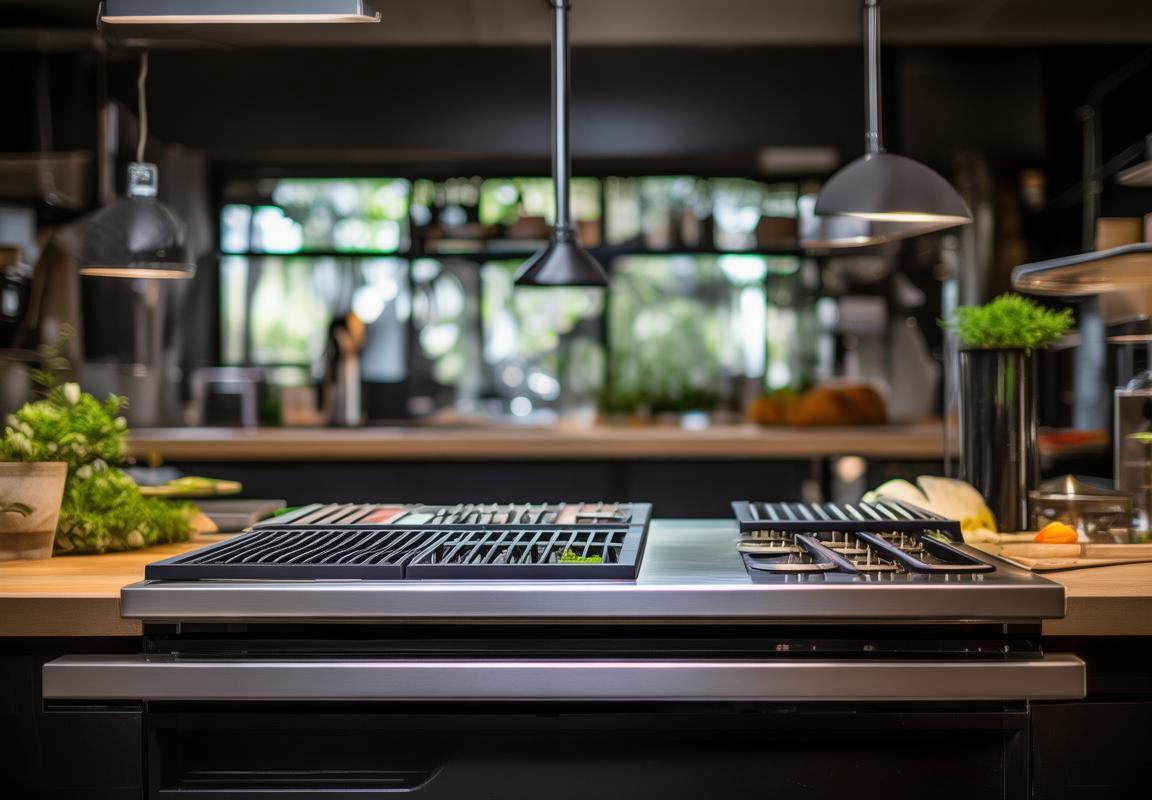
Benefits of Partnering with a Tailored Supplier
In the competitive landscape of the kitchen appliance industry, forming a partnership with a tailored supplier can be a game-changer for brands looking to stand out. Here are several key benefits that come with such a collaboration:
-
Customization and Personalization: A tailored supplier excels in creating products that align precisely with a brand’s vision and customer needs. This level of customization ensures that the final product not only meets but exceeds consumer expectations, offering features and designs that are unique to the brand.
-
Quality Control and Consistency: Working with a tailored supplier means having a direct line to quality control. These suppliers often have stringent quality standards and the ability to maintain consistency across batches, which is crucial for maintaining brand reputation and customer loyalty.
-
Cost-Effective Production: While the initial cost of working with a tailored supplier may seem higher, the long-term benefits can outweigh the investment. Tailored suppliers often optimize production processes, leading to reduced waste and more efficient use of materials, which can translate into significant cost savings over time.
-
Quick Turnaround Times: Brands that require a rapid response to market demands can benefit greatly from a tailored supplier’s agility. These suppliers are typically well-equipped to handle short lead times without compromising on quality, ensuring that products hit the shelves when they’re needed most.
-
Innovation and Development: Collaborating with a tailored supplier can foster a culture of innovation. These suppliers often have a deep understanding of the latest industry trends and technologies, allowing them to suggest new features or improvements that can give a brand a competitive edge.
-
Strategic Sourcing and Supply Chain Management: A tailored supplier can act as an extension of a brand’s team, providing strategic sourcing advice and managing the supply chain more effectively. This includes identifying cost-effective materials, managing inventory, and ensuring compliance with international regulations.
-
Enhanced Brand Identity: When a brand partners with a supplier that shares its values and commitment to quality, it reinforces its brand identity. Consumers are more likely to trust and purchase products from brands that have a reputation for excellence in manufacturing and customer service.
-
Sustainability and Environmental Responsibility: Many tailored suppliers are committed to sustainable practices and environmental responsibility. By aligning with such suppliers, brands can promote their eco-friendly initiatives and appeal to consumers who are increasingly conscious of their environmental impact.
-
Market Adaptability: The kitchen appliance market is dynamic, with rapid shifts in consumer preferences and technology. A tailored supplier can help brands adapt quickly to these changes by offering flexible production capabilities and the ability to pivot production lines when necessary.
-
Access to Expertise: Tailored suppliers often have a wealth of industry expertise that can be invaluable to a brand. From design and engineering to marketing and sales, these suppliers can provide insights and strategies that can help a brand navigate complex market challenges.
-
Reduced Risk: By having a dedicated supplier, brands can mitigate the risks associated with manufacturing and distribution. Tailored suppliers are more likely to invest in the stability of their relationships with clients, reducing the likelihood of disruptions in the supply chain.
-
Enhanced Customer Service: A tailored supplier is more likely to prioritize customer service, ensuring that any issues are addressed promptly and effectively. This can lead to higher customer satisfaction and repeat business.
-
Long-Term Partnerships: The nature of a tailored supplier relationship often fosters long-term partnerships. This can lead to more strategic collaborations, shared investment in research and development, and a deeper understanding of each other’s business goals.
-
Global Reach: Many tailored suppliers have a global presence, which can be a significant advantage for brands looking to expand into new markets. These suppliers can help navigate local regulations, customs, and distribution channels, making international expansion smoother.
-
Scalability: As a brand grows, its manufacturing needs may change. A tailored supplier can scale production up or down as required, ensuring that the brand can meet demand without overextending its resources.
In conclusion, the benefits of partnering with a tailored supplier in the kitchen appliance industry are multifaceted, offering everything from enhanced product quality and cost savings to strategic market insights and global reach. For brands aiming to thrive in a competitive landscape, such a partnership can be a cornerstone of their success.

Case Studies: Success Stories with Tailored Suppliers
In the competitive landscape of the kitchen appliance industry, partnering with a tailored supplier can be a game-changer for brands looking to stand out. Let’s delve into some success stories that showcase the impact of such collaborations.
The story of GreenGourmet Appliances began with a vision to create eco-friendly kitchen gadgets. Their initial product, a solar-powered blender, was met with enthusiasm but faced challenges in production. That’s when they turned to TailoredTech Solutions, a supplier known for its custom manufacturing capabilities. The tailored supplier not only crafted the blenders to the exact specifications but also optimized the design for energy efficiency. GreenGourmet’s product quickly gained traction, and the brand became synonymous with sustainable kitchen technology.
Similarly, KitchenCraft Innovations faced a hurdle when their new line of induction cooktops overheated during testing. The company was at a crossroads, unsure of how to proceed. They sought out Precision Components, a supplier known for its precision engineering. Precision Components not only rectified the overheating issue but also enhanced the cooktop’s performance with advanced heat management technology. The improved cooktops were a hit in the market, and KitchenCraft’s reputation for quality was solidified.
For HomeBake Bakery, the key to their success was a unique oven that could replicate the perfect bake of a professional kitchen. They turned to CustomOvenTech, a supplier specializing in custom oven solutions. CustomOvenTech designed an oven that could maintain precise temperatures and humidity levels, ensuring consistent results for every batch. The oven became a staple in artisan bakeries worldwide, and HomeBake’s products were celebrated for their superior quality.
In the world of gourmet grilling, FireArt BBQ Co. struggled to find a supplier that could produce their innovative charcoal grills with the durability and design they envisioned. They partnered with ForgeGrill Solutions, a supplier that prides itself on custom metalwork. The result was a grill that combined modern aesthetics with traditional craftsmanship. FireArt BBQ Co.’s grills became a sought-after item among outdoor enthusiasts, and the brand’s reputation for high-quality grilling equipment grew exponentially.
For the health-conscious consumer, CleanCook Appliances introduced a line of air fryers that promised healthier cooking without sacrificing taste. They faced the challenge of creating a product that could maintain even heat distribution. They turned to HeatCraft Innovations, a supplier with a focus on precision heating solutions. HeatCraft’s expertise allowed CleanCook to develop an air fryer that was not only efficient but also safe, with features like automatic shut-off and temperature control. The air fryers became a hit, and CleanCook’s brand became synonymous with healthy cooking solutions.
In the realm of smart kitchen appliances, SmartChef Electronics sought to integrate the latest technology into their countertop blender. They needed a supplier that could handle both the mechanical and software aspects of the product. They found this in TechCraft Systems, a supplier with a strong background in both electronics and software development. The resulting blender was not only powerful but also featured an intuitive app that allowed users to control and personalize their blending experience. SmartChef’s product line expanded, and the brand became a leader in smart kitchen appliances.
These case studies highlight the importance of a tailored supplier in bringing innovative products to market. From design and engineering to production and quality control, these suppliers play a crucial role in ensuring that brands can deliver on their promises to consumers. Whether it’s eco-friendliness, precision, health, or technology, the right tailored supplier can make all the difference in the success of a product and, by extension, the brand itself.
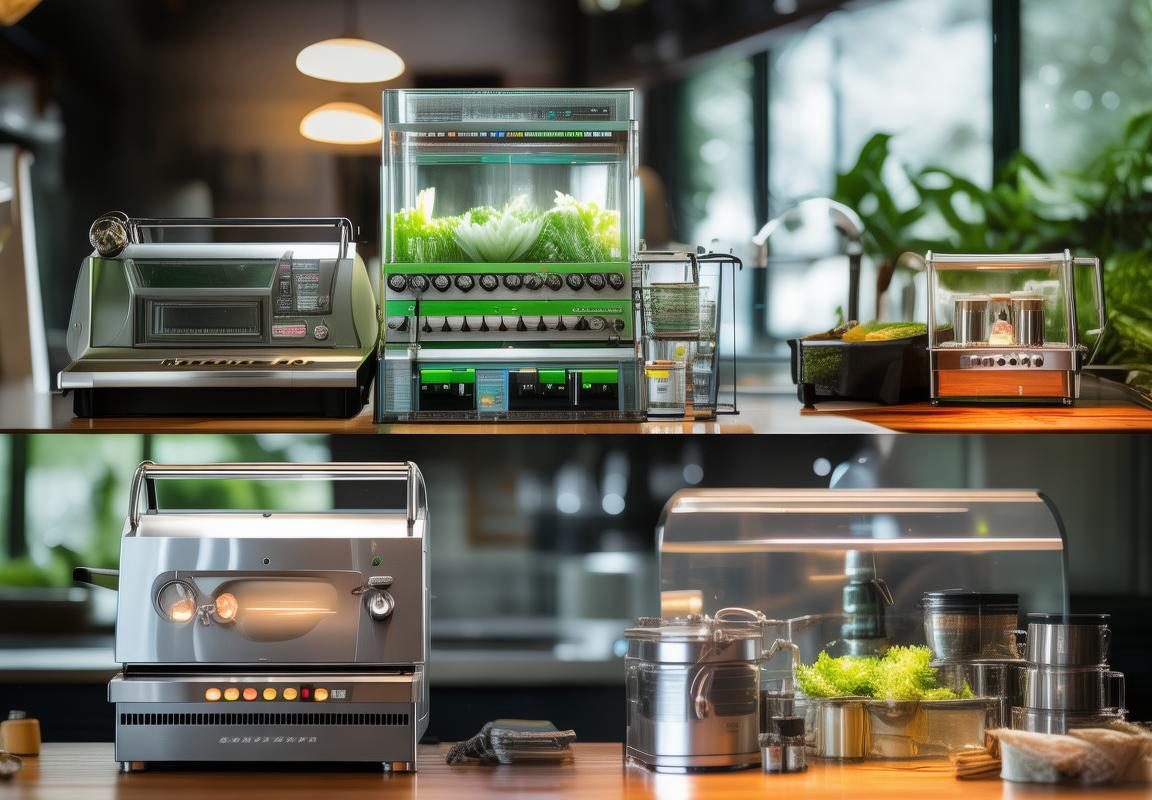
Challenges and Considerations for Brands
Navigating the complexities of the global kitchen appliance market, brands face a myriad of challenges and considerations. From product design to supply chain management, the journey to market success is fraught with complexities. Here’s an exploration of the key challenges and considerations that brands must grapple with:
Understanding Market RegulationsBrands need to be acutely aware of the regulations and standards that govern the kitchen appliance industry in different regions. Compliance with safety, health, and environmental regulations is non-negotiable. For instance, the EU’s RoHS directive restricts the use of certain hazardous substances in electrical and electronic equipment, while the FDA oversees the safety of appliances in the United States.
Supply Chain ManagementManaging a supply chain is a delicate balance of ensuring quality, timely delivery, and cost-effectiveness. Brands must navigate the intricacies of sourcing materials, finding reliable manufacturers, and coordinating logistics. Delays or disruptions in the supply chain can lead to increased costs and dissatisfied customers.
Product Design and InnovationInnovation is key to standing out in a competitive market. Brands must invest in research and development to create products that not only meet consumer needs but also exceed expectations. This involves staying abreast of the latest technological advancements and consumer trends. Designing products that are user-friendly, energy-efficient, and aesthetically pleasing is critical to attracting and retaining customers.
Quality ControlMaintaining high standards of quality is essential for brand reputation. Brands must implement rigorous quality control measures throughout the manufacturing process to ensure that every product meets the promised specifications. This includes inspecting materials, monitoring production processes, and conducting product testing.
Brand Positioning and MarketingEffective branding and marketing are crucial for market penetration. Brands must develop a strong value proposition and communicate it clearly to their target audience. This involves understanding consumer behavior, creating compelling marketing campaigns, and leveraging digital platforms to reach a wider audience.
Customer Service and SupportCustomer satisfaction is a cornerstone of business success. Brands must provide exceptional customer service and support to build loyalty and trust. This includes handling inquiries, resolving complaints, and offering post-purchase services. A robust customer service strategy can also provide valuable insights into product improvements and customer preferences.
Intellectual Property ProtectionProtecting intellectual property is vital for maintaining a competitive edge. Brands must secure patents, trademarks, and copyrights to prevent others from copying their products and diluting their brand identity. Intellectual property disputes can be costly and damaging to a brand’s reputation.
Adapting to Market ChangesThe kitchen appliance market is dynamic, with consumer preferences and technological advancements constantly evolving. Brands must be agile and adaptable, ready to pivot their strategies in response to new trends, such as the increasing popularity of smart kitchen appliances or the demand for eco-friendly products.
Sustainability and Corporate Social Responsibility (CSR)Consumers are increasingly concerned about the environmental impact of the products they purchase. Brands that prioritize sustainability and CSR can gain a competitive advantage. This involves adopting green manufacturing practices, using sustainable materials, and engaging in responsible sourcing.
Financial Planning and BudgetingManaging finances is a critical aspect of brand operations. Brands must create realistic budgets, forecast future expenses, and secure financing when necessary. Efficient financial management ensures that the brand can invest in growth opportunities while maintaining profitability.
Legal and Ethical ComplianceOperating ethically and legally is paramount. Brands must comply with all relevant laws and regulations, including labor laws, import/export restrictions, and data protection laws. Ethical practices, such as fair labor standards and transparent business practices, are also essential for maintaining a positive brand image.
In conclusion, the challenges and considerations for brands in the kitchen appliance industry are multifaceted. By addressing these areas with strategic planning and a commitment to excellence, brands can navigate the market landscape successfully and build a strong foundation for future growth.

Future Outlook: Predictions for the Contact Grill Industry
In the ever-evolving landscape of the contact grill industry, several trends and predictions are shaping the future. From technological advancements to changing consumer behaviors, here’s a glimpse into what might lie ahead:
Increased Focus on Health and WellnessConsumers today are more health-conscious than ever before, and this trend is expected to continue. As a result, the contact grill industry is likely to see a surge in demand for models that offer healthier cooking options. Expect to see a rise in contact grills that incorporate non-stick surfaces, adjustable temperature controls, and even models with air-frying capabilities to reduce oil usage.
Sustainability and Eco-Friendly FeaturesSustainability is becoming a crucial factor in consumer purchasing decisions. Brands that prioritize eco-friendly designs, materials, and manufacturing processes may gain a competitive edge. Look for contact grill manufacturers to introduce more energy-efficient models, biodegradable packaging, and even grills made from recycled materials.
Integration of Smart TechnologyThe rise of smart home technology is poised to impact the contact grill industry. Manufacturers might start integrating smart features into their grills, allowing users to control cooking settings remotely via apps, receive notifications about cooking times, and even share recipes online. This kind of integration could make contact grills more accessible and convenient for tech-savvy consumers.
Customization and PersonalizationCustomization is a growing trend across various industries, and the contact grill market is no exception. Brands may offer a wider range of customization options, from different grill plates to interchangeable accessories. This could include various temperature zones on the grill for multi-level cooking or specialized plates designed for specific types of food, like seafood or vegetarian dishes.
Global Market ExpansionWith the growing popularity of contact grills, the industry is expected to see a global expansion. As more countries embrace the convenience and health benefits of contact grills, there will be a push for international distribution and localization of products. This could involve adapting to local tastes and preferences, as well as complying with different regulatory standards around the world.
Rise of Subscription ModelsThe subscription-based business model has gained traction in many markets, and it could become a norm in the contact grill industry. Brands might offer subscription services where customers receive regular deliveries of grill accessories, cooking tips, and even replacement parts. This model could provide a steady revenue stream and foster customer loyalty.
Increased CompetitionAs the market for contact grills grows, so does competition. New entrants are likely to emerge, leading to more innovative products and better prices for consumers. Existing players may need to differentiate their offerings through superior customer service, strong brand identity, or unique features to maintain their market share.
Technological Integration in Service and SupportCustomer service and technical support will likely become more advanced with the integration of AI and chatbots. These technologies can provide instant responses to customer queries, offer troubleshooting tips, and even guide users through the setup and usage of their contact grills. This level of service could enhance the overall customer experience and reduce the strain on human customer service teams.
Influence of Social Media and InfluencersSocial media and influencers will play a significant role in shaping consumer perceptions of contact grills. Brands that effectively leverage these platforms to showcase the benefits of their products, share user-generated content, and engage with their audience are likely to see increased sales. Influencer partnerships could become a key strategy for reaching new demographics and promoting new product lines.
Evolving Distribution ChannelsDistribution channels for contact grills are expected to diversify. In addition to traditional retail, we might see an increase in online sales, partnerships with home delivery services, and even direct-to-consumer models. This shift could offer consumers greater convenience and the opportunity to access a wider range of products.
Regulatory Compliance and Safety StandardsAs the industry grows, regulatory compliance and safety standards will become more important. Brands that prioritize safety certifications and adhere to the highest standards of quality control are likely to gain consumer trust and avoid costly recalls or legal issues.
In conclusion, the contact grill industry is poised for a dynamic future. From health and sustainability to technology and global expansion, the market is ripe with opportunities and challenges. Brands that can adapt to these trends and predictions will be well-positioned to thrive in the coming years.
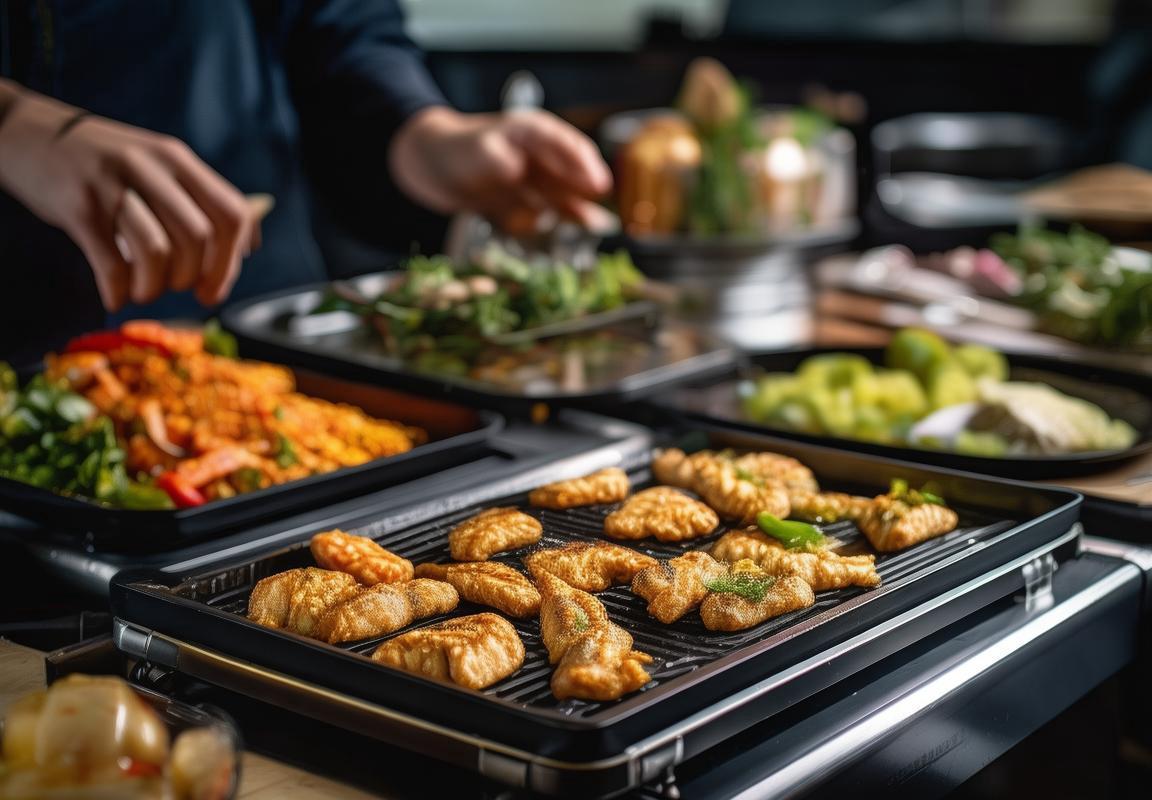
Conclusion: Navigating the Contact Grill Market with a Tailored Supplier
In the ever-evolving landscape of the contact grill industry, partnering with a tailored supplier can be the key to a brand’s success. From customization and quality control to market trends and innovation, the right supplier can make a significant difference. Here’s a look at some of the key benefits that come with such a partnership.
Customization and Brand IdentityA tailored supplier understands the importance of aligning products with a brand’s identity. Whether it’s the design of the grill, the materials used, or the functionality, a customized approach ensures that the product not only meets the technical specifications but also resonates with the brand’s ethos and target audience.
Quality Control and ConsistencyConsistency is crucial in the production of contact grills. A tailored supplier typically has stringent quality control measures in place, ensuring that each unit meets the highest standards. This means that brands can rely on their suppliers to deliver products that are not only safe and reliable but also consistent in performance and appearance.
Cost-Effective SolutionsWorking with a tailored supplier can often lead to more cost-effective solutions. By optimizing production processes and bulk purchasing materials, suppliers can offer competitive pricing without compromising on quality. This can be a significant advantage for brands looking to maintain profitability while offering competitive products to their customers.
Market ResponsivenessThe contact grill market is dynamic, with consumer preferences shifting rapidly. A tailored supplier can quickly adapt to these changes, offering new models, features, and even materials that cater to the latest trends. This agility allows brands to stay ahead of the curve and meet consumer demands efficiently.
Innovation and DevelopmentInnovation is the lifeblood of any successful product line. A tailored supplier often invests in research and development to bring new and improved products to market. By partnering with such a supplier, brands can tap into these innovations, ensuring that their offerings remain cutting-edge and appealing to consumers.
Strategic Partnerships and CollaborationBuilding a strong relationship with a tailored supplier can lead to strategic partnerships. This collaboration can extend beyond just product development, encompassing marketing strategies, supply chain management, and even after-sales service. Such a holistic approach can enhance the overall customer experience and strengthen the brand’s market position.
Case Studies: Success Stories with Tailored SuppliersLet’s look at a few success stories where brands have partnered with tailored suppliers to achieve remarkable results:
- Brand A collaborated with a supplier to develop a line of eco-friendly contact grills. The supplier’s expertise in sustainable materials and manufacturing processes allowed Brand A to launch a product that appealed to environmentally conscious consumers, boosting sales and brand reputation.
- Brand B worked with a supplier to create a high-end contact grill with advanced temperature control features. The supplier’s ability to integrate innovative technology into the product design helped Brand B capture a niche market segment, leading to increased market share and premium pricing.
- Brand C faced challenges with quality control in their previous supplier relationships. By switching to a tailored supplier, they were able to improve product consistency and reduce returns, which in turn enhanced customer satisfaction and loyalty.
Challenges and Considerations for BrandsWhile partnering with a tailored supplier offers numerous benefits, there are also challenges and considerations to keep in mind:
- Communication and Expectations: Clear and open communication is essential to ensure that the supplier understands the brand’s vision and meets their expectations. Misalignment can lead to delays and dissatisfaction.
- Long-Term Relationships: Building a successful partnership requires a long-term commitment from both parties. Brands should be prepared to invest time and resources into nurturing these relationships.
- Market Adaptability: The contact grill market is subject to rapid changes. Brands must be adaptable and willing to pivot if the market shifts unexpectedly.
- Intellectual Property Protection: When sharing proprietary information with a supplier, brands must have robust intellectual property protection in place to safeguard their innovations.
Future Outlook: Predictions for the Contact Grill IndustryLooking ahead, the contact grill industry is poised for continued growth and innovation. Here are some predictions:
- Smart Grills: With the rise of the Internet of Things (IoT), we can expect to see more smart grills that offer connectivity, remote control, and personalized cooking experiences.
- Health and Wellness: As consumers become more health-conscious, there will be a growing demand for contact grills that can offer healthier cooking options, such as low-fat and low-carb cooking modes.
- Sustainability: Eco-friendly materials and sustainable manufacturing practices will become increasingly important, as brands seek to reduce their environmental impact.
- Global Expansion: The contact grill market is not limited to Europe and America; it’s a global opportunity. Brands that can adapt their products and marketing strategies to different regions will find new markets to explore.
In conclusion, navigating the contact grill market with a tailored supplier requires a strategic approach. By focusing on customization, quality, cost-effectiveness, and innovation, brands can build strong partnerships that drive success in a competitive industry.